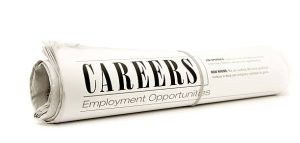Should You Include Professional Development Training In Your Resume?
In preparing their resumes, most candidates feature their academic or vocational qualifications; it would be a very unusual resume, if candidates did not display their qualifications. These qualifications are usually either academic or vocational. For example, degrees in Science or Arts are seen as academic qualifications whereas an Electrician’s Certificate would be vocational. However, many…
In preparing their resumes, most candidates feature their academic or vocational qualifications; it would be a very unusual resume, if candidates did not display their qualifications. These qualifications are usually either academic or vocational. For example, degrees in Science or Arts are seen as academic qualifications whereas an Electrician’s Certificate would be vocational.
However, many candidates neglect to detail any additional training. In fact in our experience, about half the resumes we receive, either do not detail additional training or only offer the slightest of detail. For many candidates additional training is an afterthought.
Additional training comes in a variety of forms, ranging from half day to as many as five-day courses in such topics as:
- Negotiation, Leadership, Time Management and so on. And can be in-house or external and nowadays increasingly as Webinars.
Certificates and Diplomas in particular subjects or specialties, such as:
- Sales, Marketing, Computing and so on.
The upper end of additional training can and does blur into vocational and academic learning. For example, a Masters Degree may have started off as a Certificate in Business and morphed into a higher degree.
Additional training is a vital part of on-going professional development and documenting your additional training in a resume is a good way to demonstrate to a potential employer that you are interested in your career and your professional development. For many people this ongoing training is the only training that they will undergo until they retire.
Leaving out your additional training can signal either of two things (or perhaps both), i.e., that you have not participated in any additional training or that you couldn’t be bothered in recording it in your resume. Of course, there is a balance in these things: after a long career you might have several pages documenting your additional training, which could be excessive. It would be better to highlight the training more relevant to the role you are applying for and delete the irrelevant.
Taking the time to update your additional training tally is a useful exercise because you can use it to gauge the extent of your training and assess your future needs. If you find that for some years that you have done no additional training then this a wake-up call and time to get moving.
For example; you may think that because you have been a salesperson for 15 years and you have done several sales courses that you know all there is to know. But the truth is we all can do with a bit of brushing up. Plus if you are reluctant to learn new things, then surely this is a sign that you are getting stale and maybe it is time to get some fresh training and blow out those cobwebs.
In some professions, additional training is a vital and crucial element of maintaining your professional status; for example, accountants. If you don’t undertake and document your continuing training you are unable to maintain your professional status as a certified accountant.
If you work in a profession that does not have a continuous certification program (or if you are in one that does, but decide not to participate) then you have to take responsibility for yourself. Because no one else is going to take charge of your career and make sure that you keep up to date and maintain your employment desirability status. This is especially important if you work for a firm that does not encourage or provide ongoing training.
Additional training, often an after-thought, is in reality an important indicator of both your job readiness and your interest in your profession/career
Smart employers know this and use it as a key indicator in judging candidate’s suitability for a role.
The Latest Updates
Let’s look at the current trends in job demand and talent availability in the agriculture and agribusiness sector in Australia over the second half of 2023 and the first quarter of 2024. There was a weakening of job demand in this sector but a slight improvement in candidate availability and job interest during this period….
In times past, people’s working lives often played out over many years at one company, but now the world has vastly changed. These days it is common to shift between jobs and organisations, but this practice raises questions as to what is today considered the Goldilocks time to spend in a job? How often do…
Employee retention matters. Organisational issues such as training time and investment, lost knowledge, mourning, insecure co-workers and a costly candidate search aside; failing to retain a key employee is costly. Various estimates suggest that losing a middle manager costs an organisation up to 100 percent of their salary. The loss of a senior executive is…











